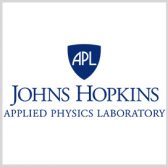 Johns Hopkins University Applied Physics Laboratory has confirmed a spacecraft it built for NASA has reached its target object in the Kuiper Belt, performing the farthest space exploration in history.
Johns Hopkins University Applied Physics Laboratory has confirmed a spacecraft it built for NASA has reached its target object in the Kuiper Belt, performing the farthest space exploration in history.
The New Horizons probe encountered Ultima Thule before New Year and already sent flyby data to an operations center on Earth, APL said Tuesday.
APL received the images 10 hours after the vehicle’s closest approach to the trans-Neptunian object.
NASA Administrator Jim Bridenstine said the spacecraft “flew by the most distant object ever visited by a spacecraft and became the first to directly explore an object that holds remnants from the birth of our solar system.”
Initial images reveal information about the shape and dimensions of Ultima Thule.
The lab operates New Horizons for NASA’s Science Mission Directorate and expects the space probe to continue delivering data over the next 20 months.




